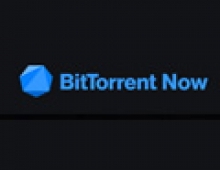
BitTorrent Sync 2.0 Coming Next Year
BitTorrent on Wednesday announced its plans for BitTorrent Sync 2.0, which is scheduled to launch in 2015. BitTorrent Sync started a year ago to give people the ability to sync large files fast by skipping the cloud. Users can syncing files between their devices and sharing them with others; replicate files across devices controlled in an IT environment or send large files to others.
Sync 2.0 will be available as an updated free edition as well as a Pro edition.

Intended for individuals needing to sync and share a lot of data and those participating in collaborative professional workgroups, Sync Pro provides additional functionality. Capabilities like having access to very large folders, controlling ownership and permissions for shared folders, and keeping information automatically consistent across desktops and mobile devices will now be possible. BitTorrent says profiles won't require a sign-up with the company or any kind of web-based membership. Instead, the new automatic sync feature will rely on an alphanumeric key that you'll have to copy across devices, similar to what you do know with BitTorrent Bleep.
To get it you'll have to pony up $40 per year. However, BitTorrent says there will be a trial period during the initial Sync 2.0 rolls out that will allow all users to try Sync Pro for a limited time.
In order to give IT admins a powerful solution to deploy, manage, monitor, and scale Sync operations, BitTorrent has already increased Sync’s scalability in its lab to 1000 devices, with some full synchronization events finishing is less than one minute.
The Sync-based file replication product will not be available until some time after Sync 2.0 has launched.
BitTorrent also plans to release an app that allows users to move files from one mobile device to another, regardless of the platform the devices are running (Android, iOS, and Windows Phone).
Recently there have been some public assertions made questioning the integrity of Sync’s security. BitTorrent says that much of it "was speculative, in part owing to a lack of understanding of how the technology functions." The company has provided answers to the security-related assertions here.





















